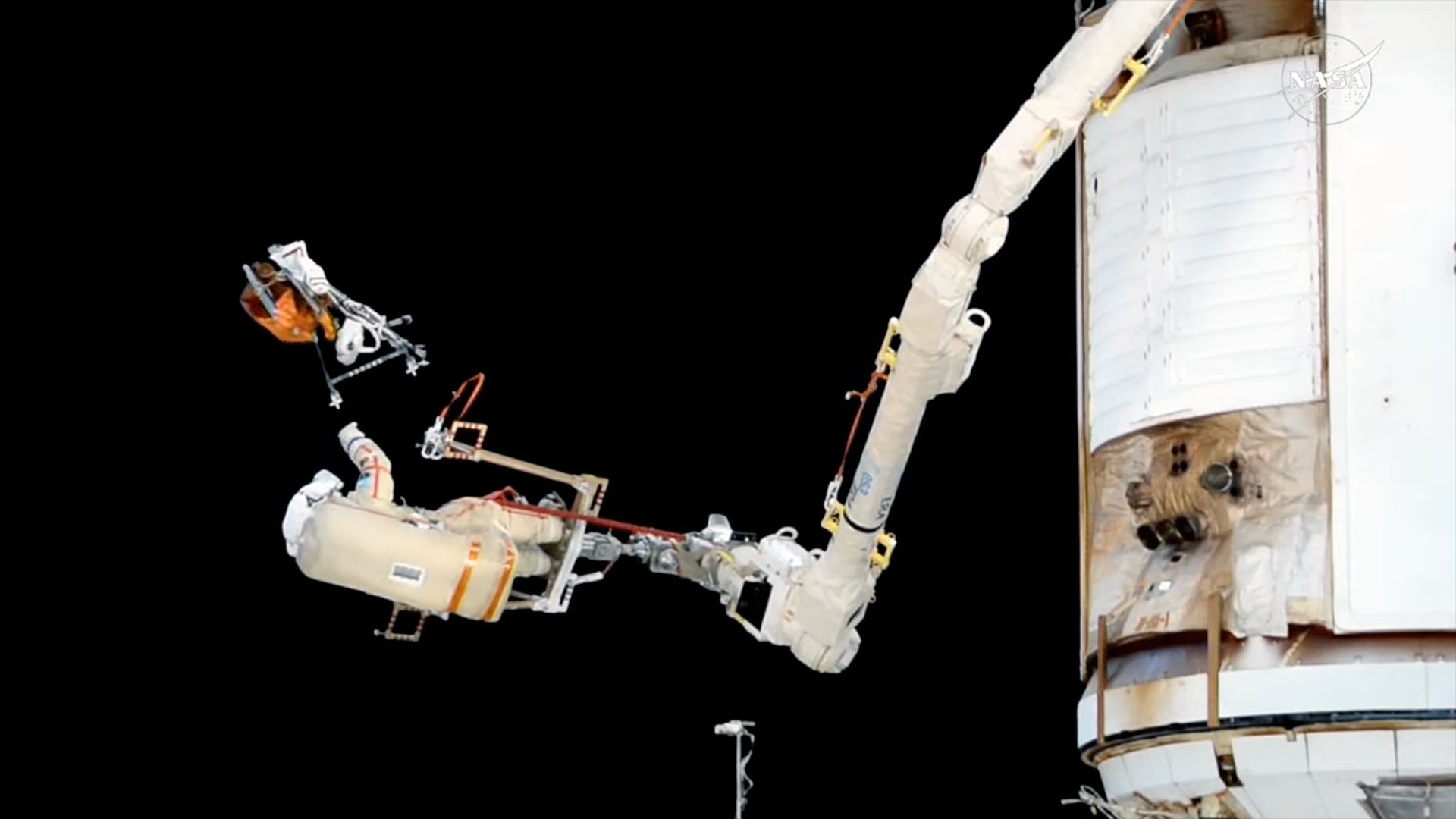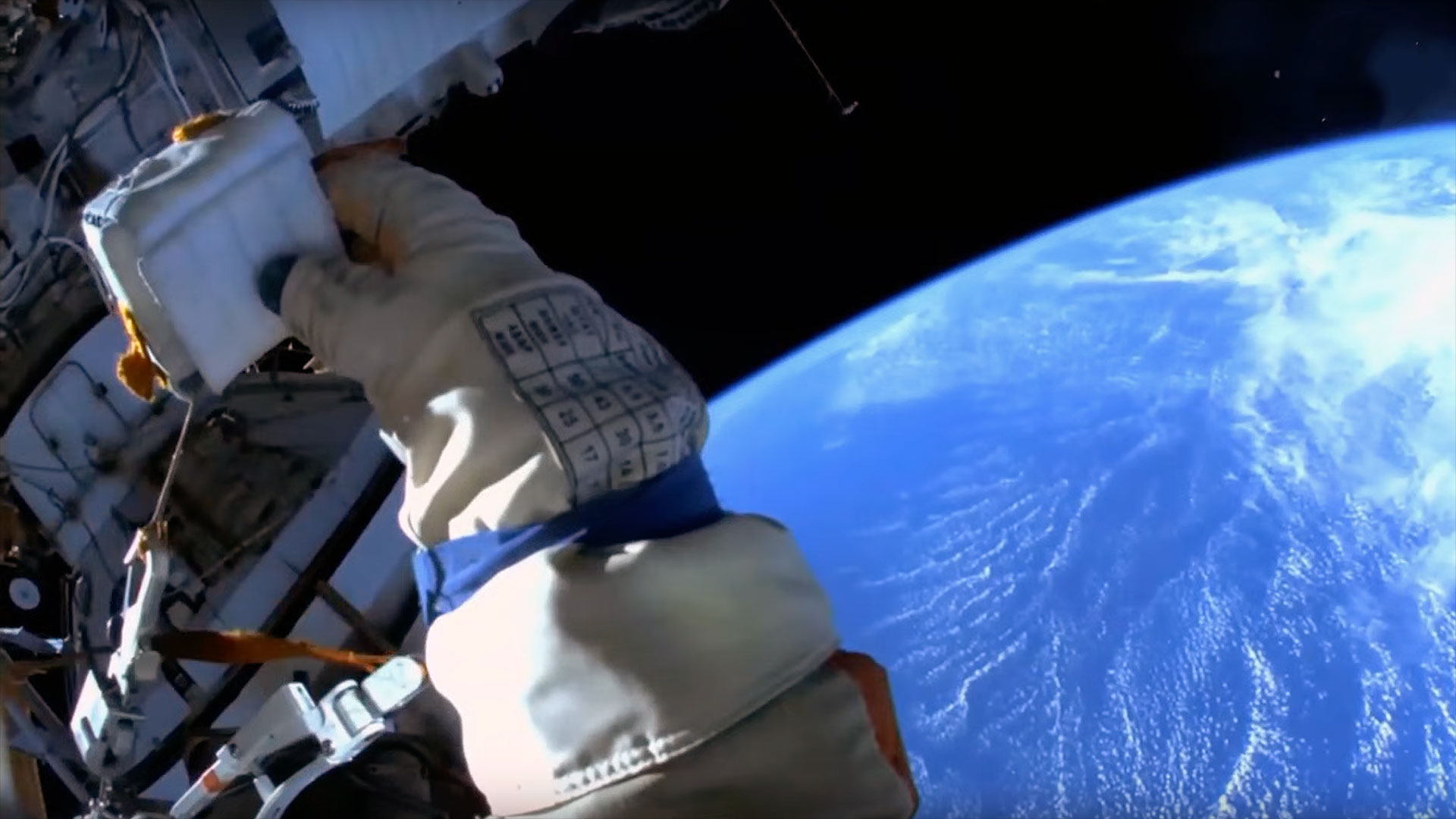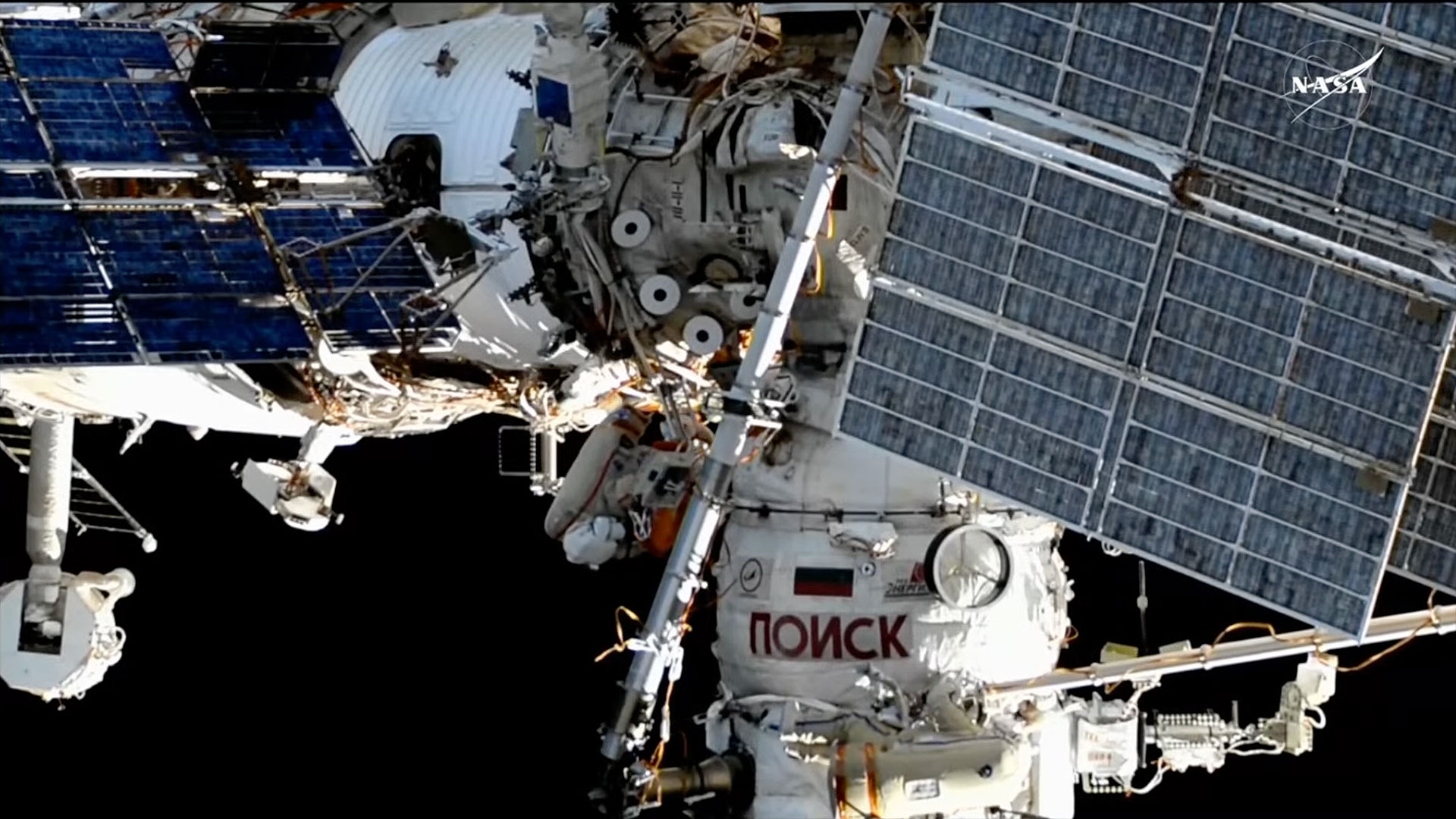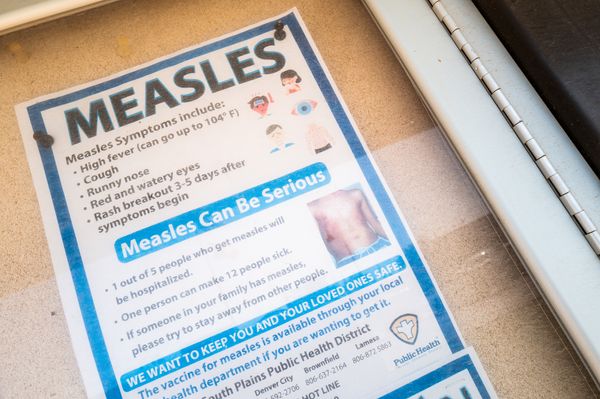
A Russian cosmonaut took a short ride at the end of a robotic arm to jettison spent equipment that he and a crewmate collected during a spacewalk outside the International Space Station today (Dec. 19).
Expedition 72 flight engineer Alexey Ovchinin secured his feet at one end of the European Robotic Arm (ERA) toward the end of his and Ivan Vagner's seven-hour extravehicular activity (EVA) today. Fellow Roscosmos cosmonaut Alexsandr Gorbunov controlled the 37-foot-long (11.3 meters) arm's movement from inside the space station.
At the desired point, Ovchinin tossed the bundle of no longer needed electrical connectors, covers and an experiment boom overboard such that it would no longer come in contact with the orbiting laboratory before burning up while reentering Earth's atmosphere.

"Here it goes, it is floating away," said Ovchinin as he released the bundle with a push toward the aft end of the space station. "It is going away nicely."
Related: Spacewalks: How they work and major milestones
Ovchinin and Vagner began the spacewalk at 10:36 a.m. EST (1536 GMT) as they opened the hatch to the airlock on the Poisk mini-research module. Once outside the station and having picked up the tools they needed for the excursion, the two cosmonauts proceeded to the Zvezda service module, where they installed the "All-Sky Monitor," an X-ray spectrometer.
Using the All-Sky Monitor, "scientists will conduct a periodic, almost full (84 percent) observation of the celestial sphere within the X-ray wavelength range every 72 days over three years (in all, 15 such observations are being planned)," according to a Roscosmos statement.
From there, Ovchinin and Vagner worked on swapping out four electrical connector patch panels on the outside of Zvezda with new replacements. The old panels were part of the bundle that Ovchinin disposed of later in the spacewalk.
The cosmonauts also collected experiments that exposed materials ("Test and Endurance") and biological samples ("Control") to assess their reaction to the space environment. Ovchinin and Vagner brought the experiment panels back inside the station to be returned to Earth on a Soyuz spacecraft for further study on the ground.
As a final task, the spacewalkers jettisoned towels that they used to wipe down their spacesuits' gloves before reentering the airlock.
Due to time constraints, the spacewalkers forewent the relocation of an exterior control panel for the European Robotic Arm. The move would have cleared a translation path for future EVAs but otherwise was not critical to station operations.

Thursday's spacewalk ended at 5:53 p.m. (2253 GMT), 7 hours and 17 minutes after it began. It was the 272nd EVA in support of the assembly, maintenance and upgrade of the International Space Station since 1998.
This was the first spacewalk during Expedition 72 and the third conducted at the International Space Station this year (including a U.S. spacewalk that was cut short at just 31 minutes due to a water leak while both crew members were still inside the Quest airlock). Five additional spacewalks were performed in 2024, including four outside China's Tiangong space station by the Shenzhou 17, 18 and 19 crews and the world's first commercial spacewalk, conducted by the Polars Dawn crew outside a SpaceX Dragon spacecraft.
It was Ovchinin's second EVA and Vagner's first. Ovchinin previously conducted a six hour and one minute spacewalk in 2019, such that his total is now 13 hours and 18 minutes working in the vacuum of space.







